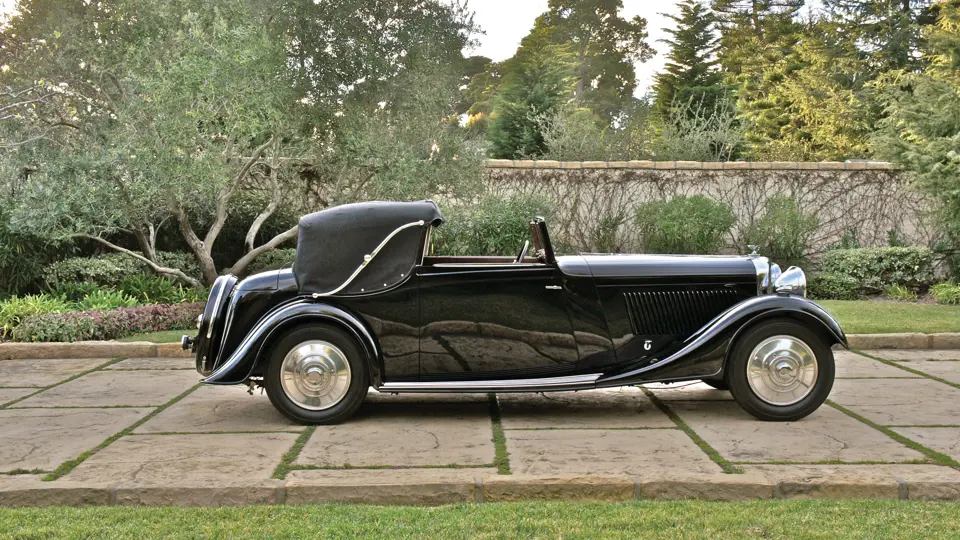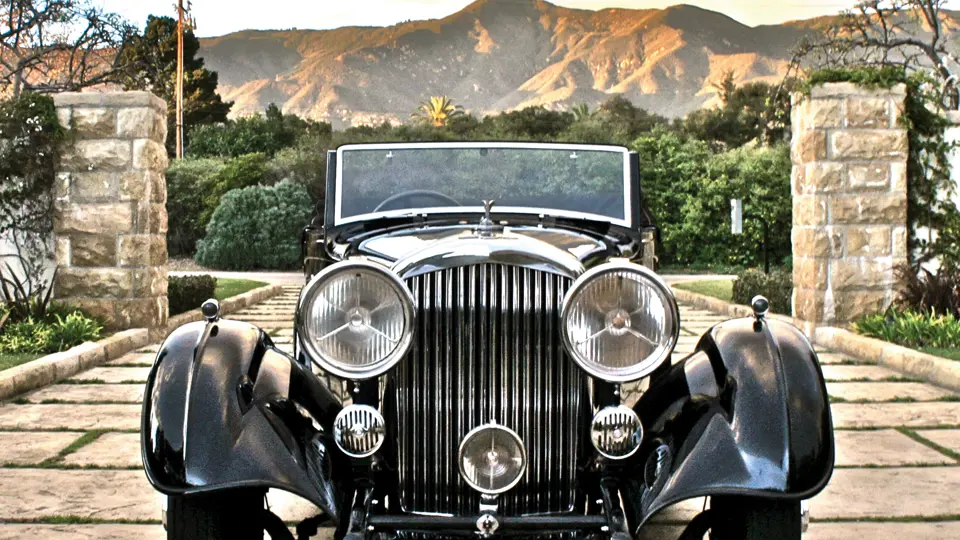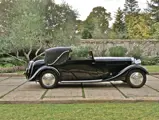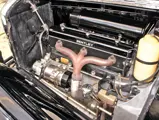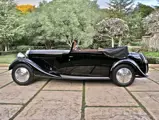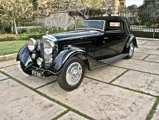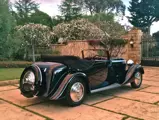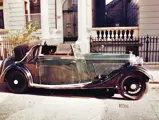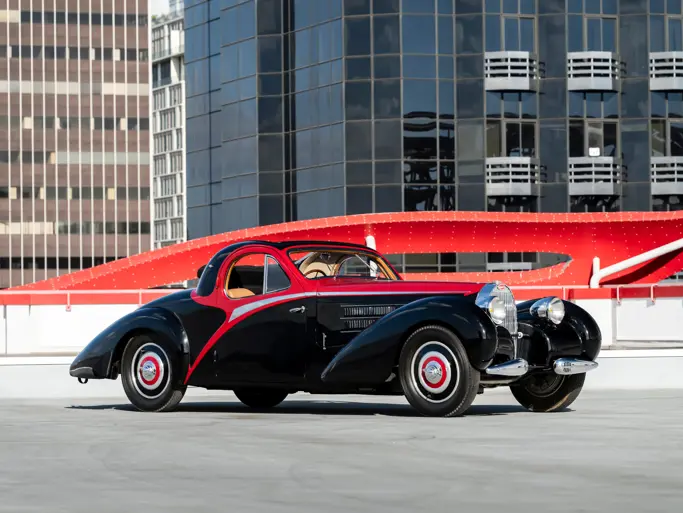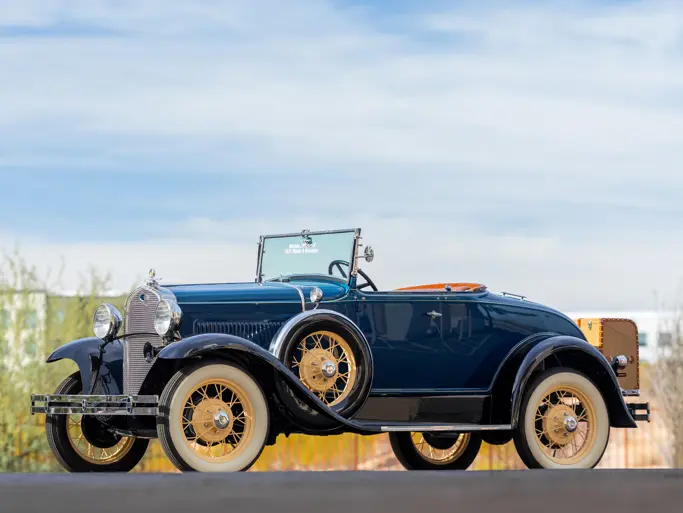
1934 Bentley 3½-Litre Three-Position Drophead Coupe by Thrupp and Maberly
{{lr.item.text}}
$231,000 USD | Sold
{{bidding.lot.reserveStatusFormatted}}
- Originally delivered to British aristocrat M.A. Spencer-Nairn
- Documented ownership history from new
- Original coachwork, engine, and gearbox
- Recent cosmetic freshening by marque specialists
105 bhp, 3,669 cc inline six-cylinder engine with two SU carburetors, four-speed manual gearbox with synchromesh on the 3rd and 4th gears, semi-elliptic suspension with adjustable hydraulic shock absorbers, and four-wheel mechanical servo-assisted drum brakes. Wheelbase: 126 in.
Rolls-Royce acquired the financially challenged Bentley Motors from Walter Owen Bentley in 1931, promising him that he would continue to produce Bentley-badged cars. Rolls-Royce and Bentley Motors Works’ manager at Derby, E.W. Hives, headed the team that was tasked with designing the all-new Bentley 3½-Litre. His personal notes read, “…answer to the moods of the driver…be driven fast with safety or will tour without fuss and noise…maximum speed should not be obtained at the expense of acceleration…controls, steering, and brakes shall be light to operate, and the braking shall be adequate for a fast car…maximum speed of the car on the road should be 90 mph, 75 mph in third gear…”
One car enthusiast that was attracted to this exciting car was M.S. Spencer-Nairn, of Fife, Scotland, the heir to the Michael Nairn linoleum company. In chapter 12 of his published family history, Silver Spoon, Mr. Nairn wrote that he sold his 1932 Lagonda Open Tourer and bought “…my dream car, a 3½-Litre Bentley…to be fitted with a drop head coupé body made by Thrupp & Maberly.”
Mr. Spencer-Nairn specified that his new Bentley be fitted with several bespoke items: a speedometer with a clock mounted in the upper center of the dial, a steering column and gear lever that were two inches shorter than was standard, and that the car be built for “town work and touring.” The excited new first owner accepted delivery of the car on June 18, 1934, and then drove the car extensively until he was called to serve in World War II. Chassis B75BL was stored during the war, and although he still adored it, he needed a larger car, which he sadly recounted in his memoir, “Unfortunately it was not a good family car, so when we had four children, I sold it with over 100,000 miles on the clock and replaced it with a standard four-door saloon Bentley.”
It was sold to R.E. Merchant, of Derby, who owned it until 1984, when it was acquired by Howard Brown, a Californian working in London. It was repainted, and the chassis, mechanicals, and cosmetics were redone, resulting in a very reliable car and “a joy to drive.” When Howard and Kathie Brown returned to California they brought their beloved Bentley with them. In 2008, Mr. Brown had the car’s body stripped to bare metal in preparation for repainting, but sadly, he died prior to its completion. The car remained in Mrs. Brown’s ownership until it was sold to its current owner, who completed the freshening.
Chassis B75BL remains in excellent mechanical condition. The Biscuit-colored leather upholstery, repolished veneers, and new Fawn Wilton wool carpets with Biscuit welting are era-correct and complement the black coachwork. The Bentley is fitted with correct new wheel discs and new Dunlop tires, and it will be presented to its fortunate new owner complete with an extensive history, which includes English log books, build sheets and the original owner’s handbook that have been issued by Bentley Motor Cars, and the service file, which dates back to 1953.
Few pre-war cars carry more graceful coachwork or offer more fun behind the wheel than the Derby Bentley. Open cars like this one are especially appealing. It is deservedly one of the most popular tour cars at club events, and this brilliant example will certainly be invited to participate in the most prestigious concours as well.

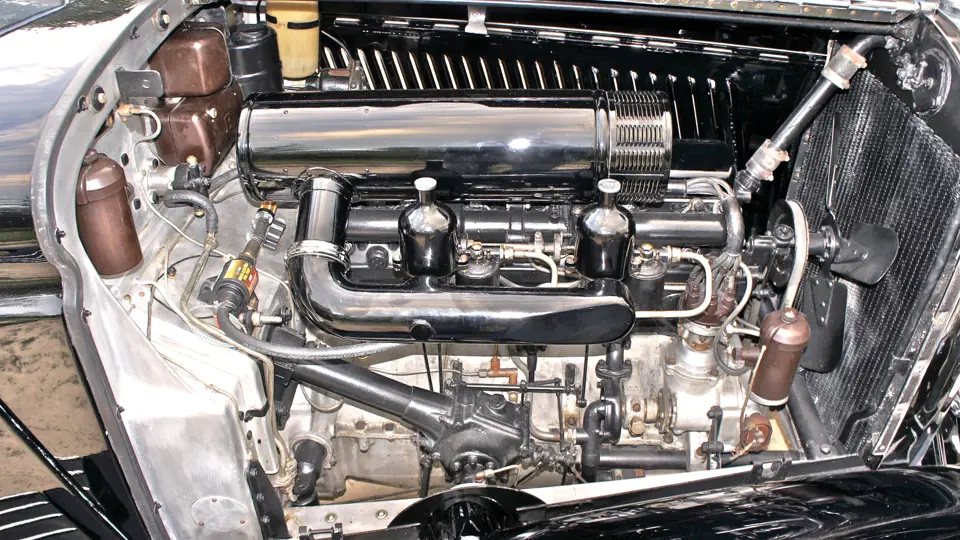


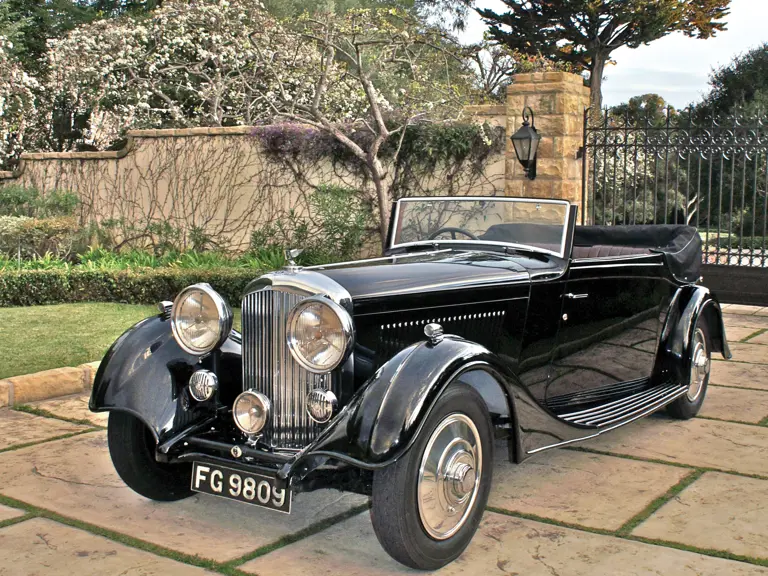

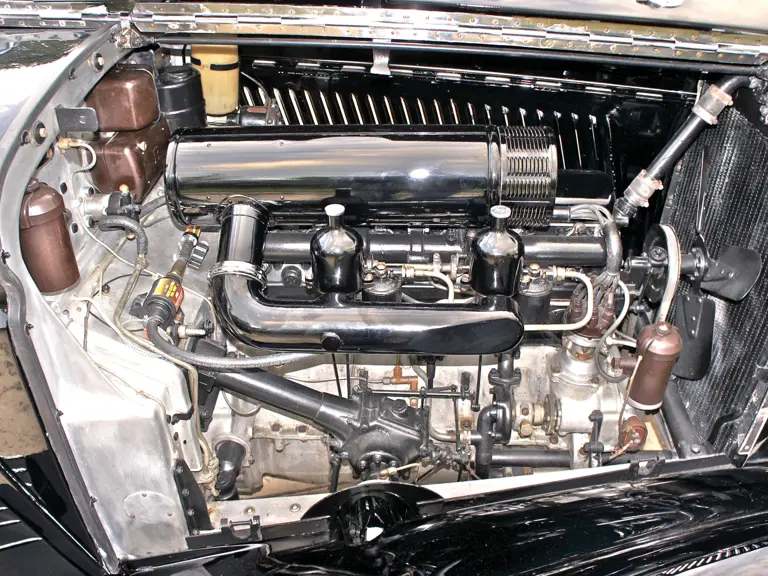

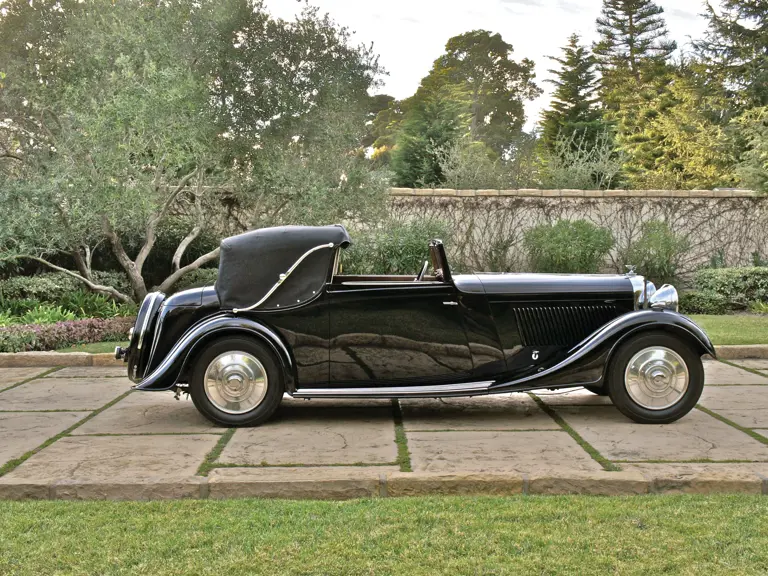
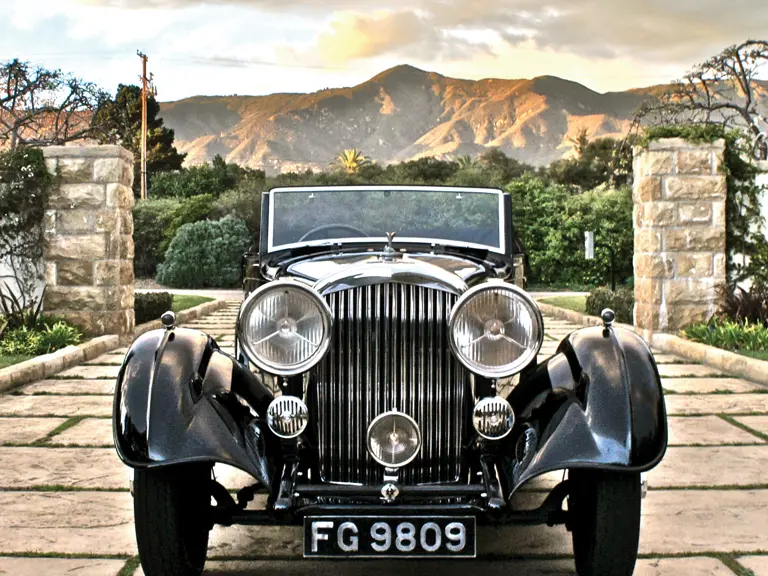
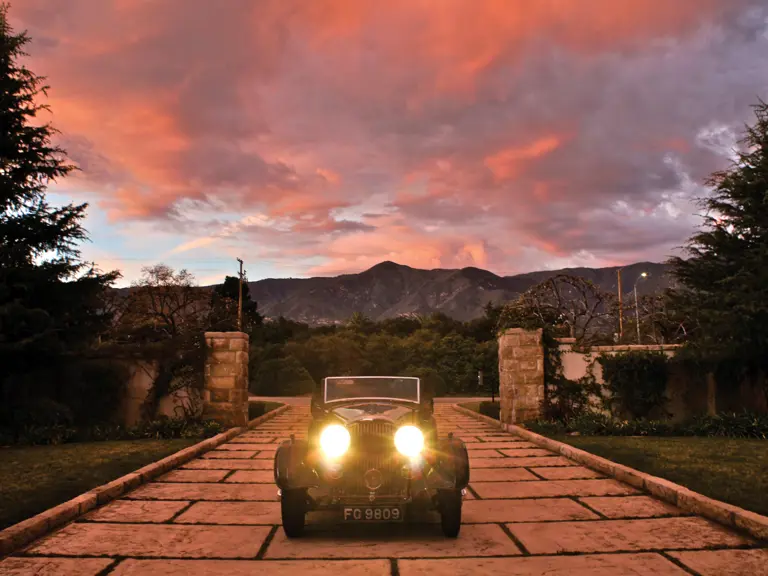
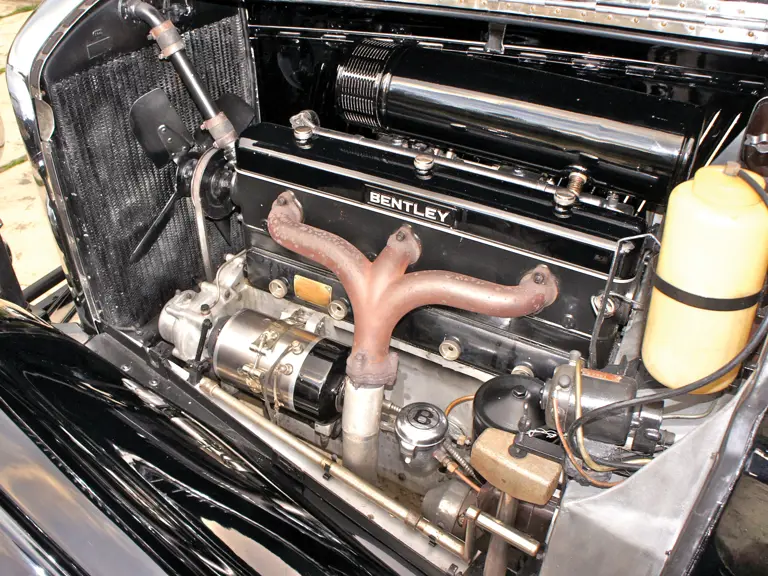
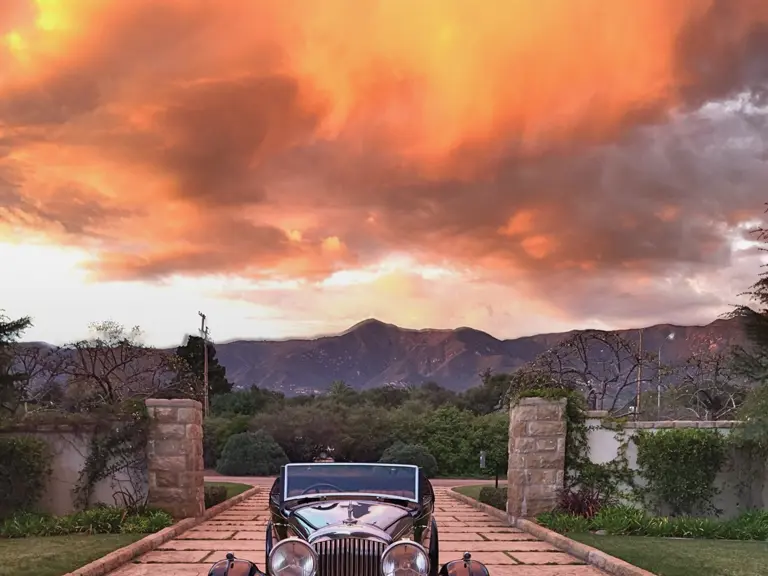
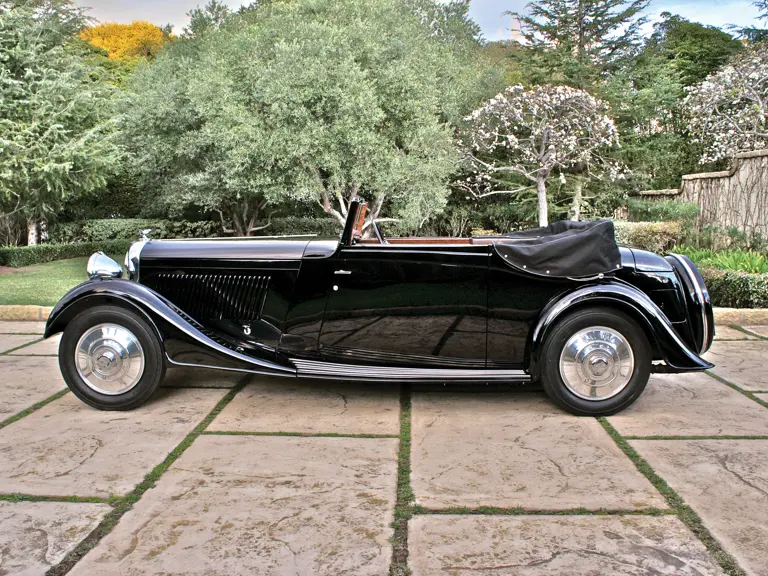

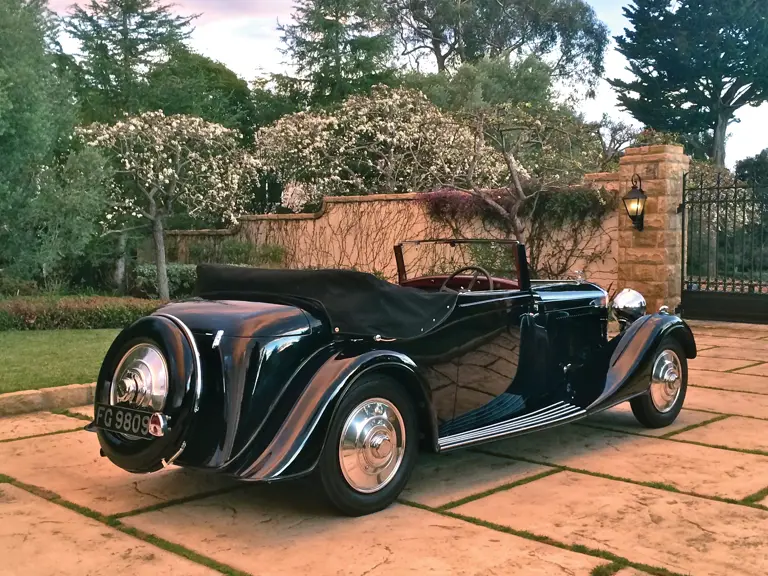
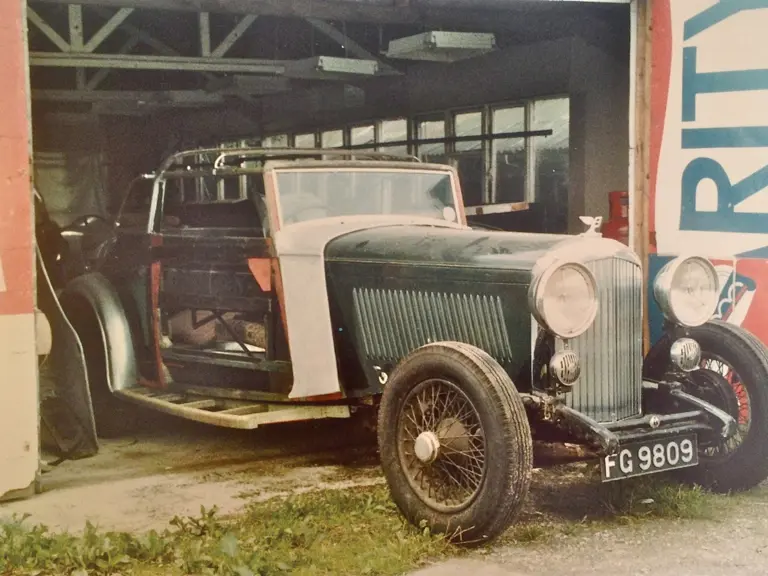
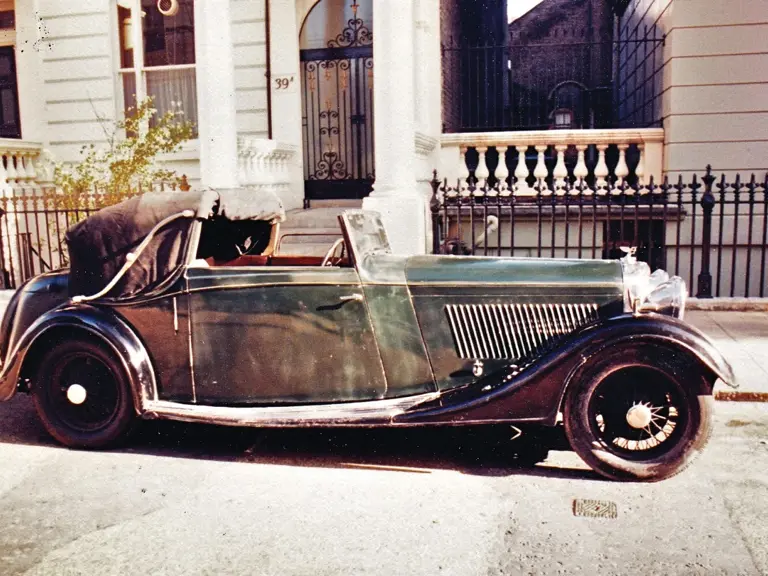
 | Amelia Island, Florida
| Amelia Island, Florida
